Web accessibility and search engine optimization (SEO) are two critical elements that shape a website’s success. They might seem like separate considerations, but they have a synergistic relationship. While SEO focuses on making a website more discoverable in search engines, web accessibility ensures that people of all abilities can easily navigate, understand, and interact with it. This dual approach reaches a broader audience and aligns with ethical practices and legal standards. A focus on web accessibility can ultimately elevate a site’s SEO, boosting visibility and user engagement.
What is Web Accessibility?
Web accessibility is the practice of designing and developing websites, apps, and digital content so that all users, regardless of their abilities or disabilities, can interact effectively with the site. It encompasses a range of considerations, including visual, auditory, motor, and cognitive aspects, ensuring that anyone can access and engage with web content without facing unnecessary obstacles. This might mean including screen reader compatibility, enabling keyboard navigation, providing alt text for images, and using accessible color contrasts, among other adjustments. By adopting web accessibility standards, businesses make their sites more inclusive and easier to navigate for all users.
The Importance of Web Accessibility
Investing in web accessibility isn’t just about compliance—it’s about creating a better user experience for everyone. Here’s why accessibility is crucial for both users and your business’s growth:
Improves User Experience for All
Accessible websites are designed with simplicity, clarity, and usability. By focusing on accessibility, businesses can create streamlined, intuitive experiences that benefit everyone, including those without disabilities. This design principle improves the user journey, making it easier for all visitors to find what they need and boosting engagement rates.
Enhances Legal Compliance
Many countries, including the United States, have laws mandating web accessibility under regulations like the Americans with Disabilities Act (ADA). Non-compliance can lead to lawsuits, fines, and damage to a brand’s reputation. By making your website accessible, you’re protecting your business from legal risks while contributing positively to social responsibility.
Expands Audience Reach
According to the World Health Organization (WHO), over one billion people worldwide experience some form of disability. Making your website accessible opens your digital doors to a larger audience, increasing the number of potential customers. More visitors mean more opportunities for conversions, ultimately growing your business.
Builds Brand Reputation and Loyalty
Incorporating accessibility reflects a commitment to inclusivity, which resonates with customers who value ethical and socially responsible companies. Showing that your brand cares about accessibility can foster trust and loyalty, encouraging visitors to return to your website and recommend it to others.
Can Web Accessibility Affect SEO?
Absolutely—SEO and accessibility often work in tandem, where improvements in accessibility can directly boost a website’s search engine performance. Here’s how accessibility enhancements can positively impact SEO:
Enhances Website Crawlability
Making your site accessible often involves structuring content clearly with proper headings and alt text. These elements help screen readers interpret content for visually impaired users and help search engine crawlers understand the content better. Clear, organized content is easier for search engines to index, which can lead to improved rankings.
Boosts Page Load Speed
A critical aspect of accessibility is ensuring fast page loading times. Accessible websites tend to be optimized for quick loading, which is a key ranking factor for SEO. Compressed images, reduced heavy animations, and optimized scripts help create a smoother, faster user experience that search engines reward with better rankings.
Increases Time on Page and Reduces Bounce Rates
Accessibility improvements contribute to more engaged visitors. When users can easily navigate, they’re more likely to stay on the page longer and explore additional pages. This decreases bounce rates and increases average session duration—two factors that search engines view favorably when determining rankings.
Improves Mobile Friendliness
Accessible websites are generally optimized for mobile viewing, which has become essential as mobile traffic increases. Google and other search engines prioritize mobile-friendly websites in their rankings, meaning a mobile-accessible, responsive website has a higher chance of performing well in search results.
SEO and ADA Principles
There’s a close connection between SEO and the principles of the Americans with Disabilities Act (ADA). SEO and ADA-compliant practices share the goal of making content accessible and easily navigable for everyone, whether they’re using screen readers, mobile devices, or other assistive technologies. For instance, proper heading structures, descriptive image alt texts, and clear, readable content benefit both ADA compliance and SEO. Aligning with ADA standards, like providing text descriptions for images and ensuring color contrast, can positively impact search rankings by creating an optimized, user-focused experience.
5 Best Practices for Web Accessibility and SEO
Use Descriptive Alt Text for Images
Alt text provides a description of images, allowing screen readers to interpret the content for visually impaired users. Descriptive alt text also helps search engines understand the relevance of images, contributing to better rankings in image search results.
Implement Semantic HTML
Semantic HTML tags, like , , and , help define the structure of a webpage, making it easier for screen readers and search engines to comprehend the content hierarchy. Using these tags improves accessibility while providing SEO benefits through clearer page structure.
Optimize for Keyboard Navigation
Some users rely on keyboards or assistive devices rather than a mouse. Ensuring your website’s navigation and interactive elements are keyboard-friendly is crucial for accessibility. It also signals to search engines that your site is user-friendly and well-structured.
Ensure Color Contrast and Font Legibility
Choosing accessible color contrasts and legible font sizes aids readability for users with visual impairments. This enhances user experience, decreases bounce rates, and can indirectly benefit SEO by making content easier to consume.
Design Forms for All Users
Accessible forms ensure that every visitor can easily complete and submit information, regardless of their abilities. Each form field should have clearly associated labels and simple instructions so users know exactly what’s expected. Error messages should also be descriptive, guiding users on how to correct mistakes without causing frustration. Accessible, user-friendly forms reduce abandonment rates and improve overall engagement—a positive signal for SEO performance.
Enhance Web Accessibility and SEO with CadenceSEO!
At CadenceSEO, we specialize in building websites that are both accessible and optimized for search engines. Enhancing web accessibility can seem overwhelming, but our expert team is here to help you navigate it all. With our web design assistance services, we’ll work with you to create a site that meets accessibility standards and aligns with SEO best practices, making your business more discoverable to all users. Whether you aim to improve your SEO rankings, boost user engagement, or ensure ADA compliance, we can provide the support you need to make it happen. Schedule your free strategy session with our team of SEO experts today!






